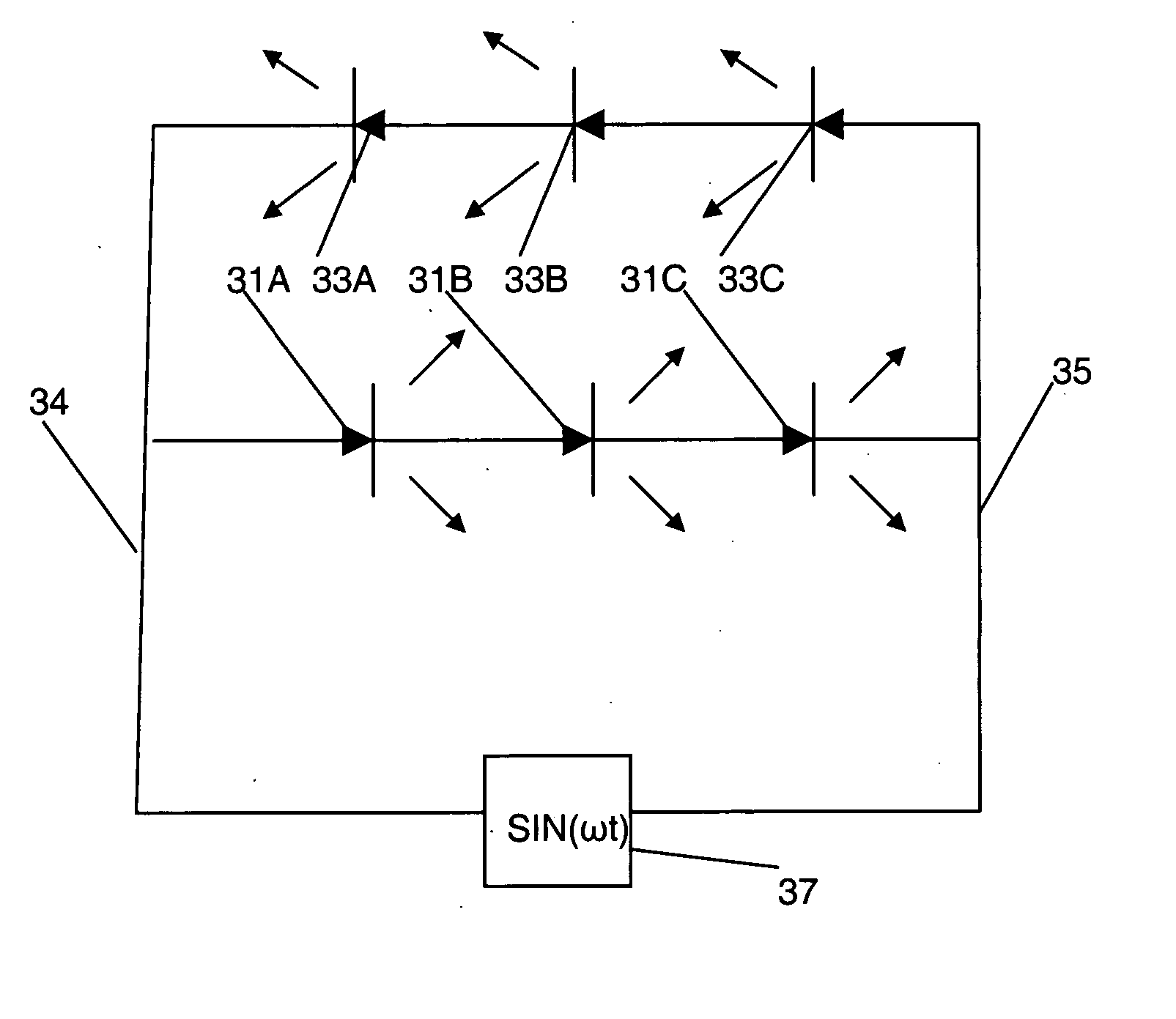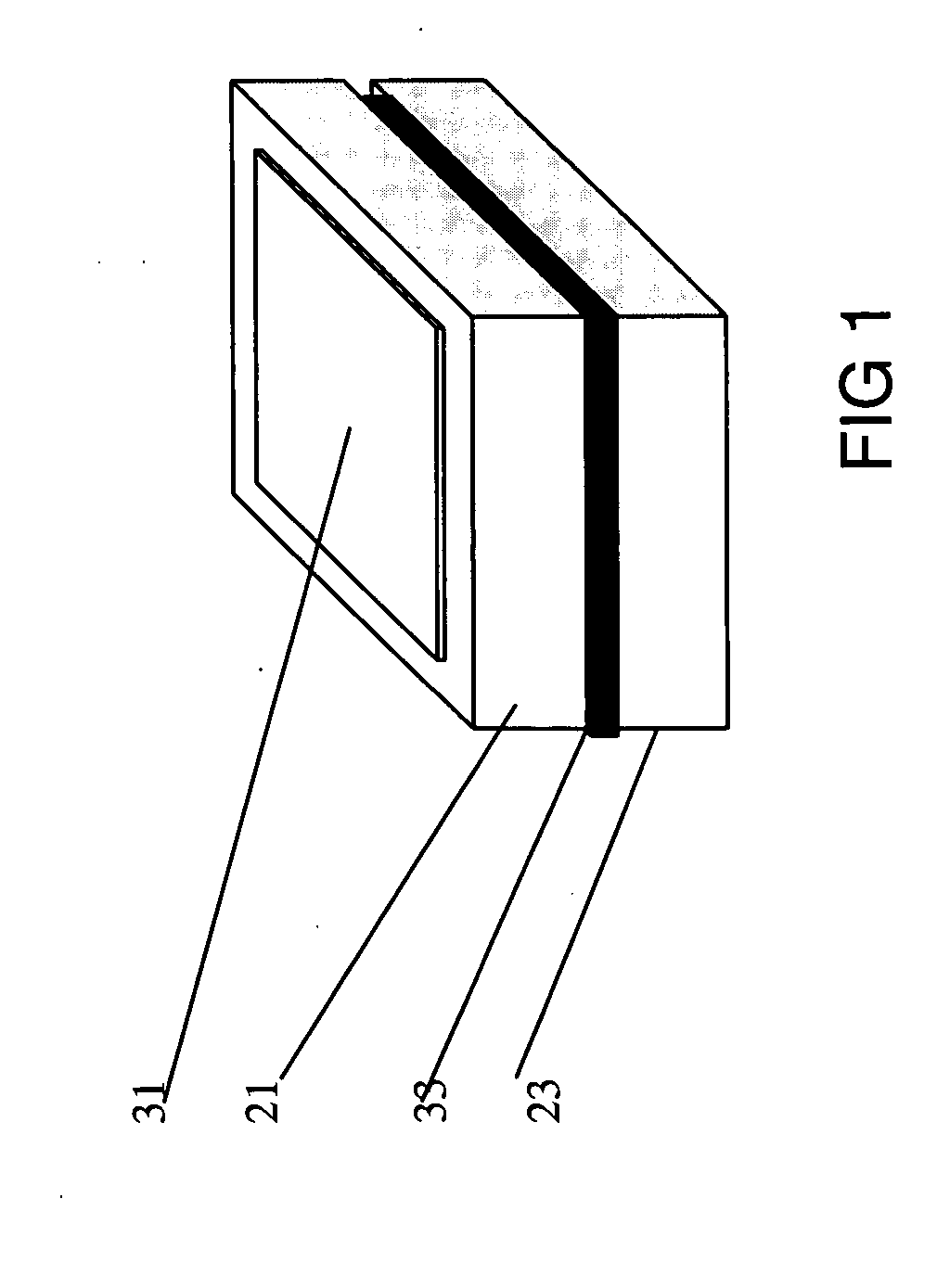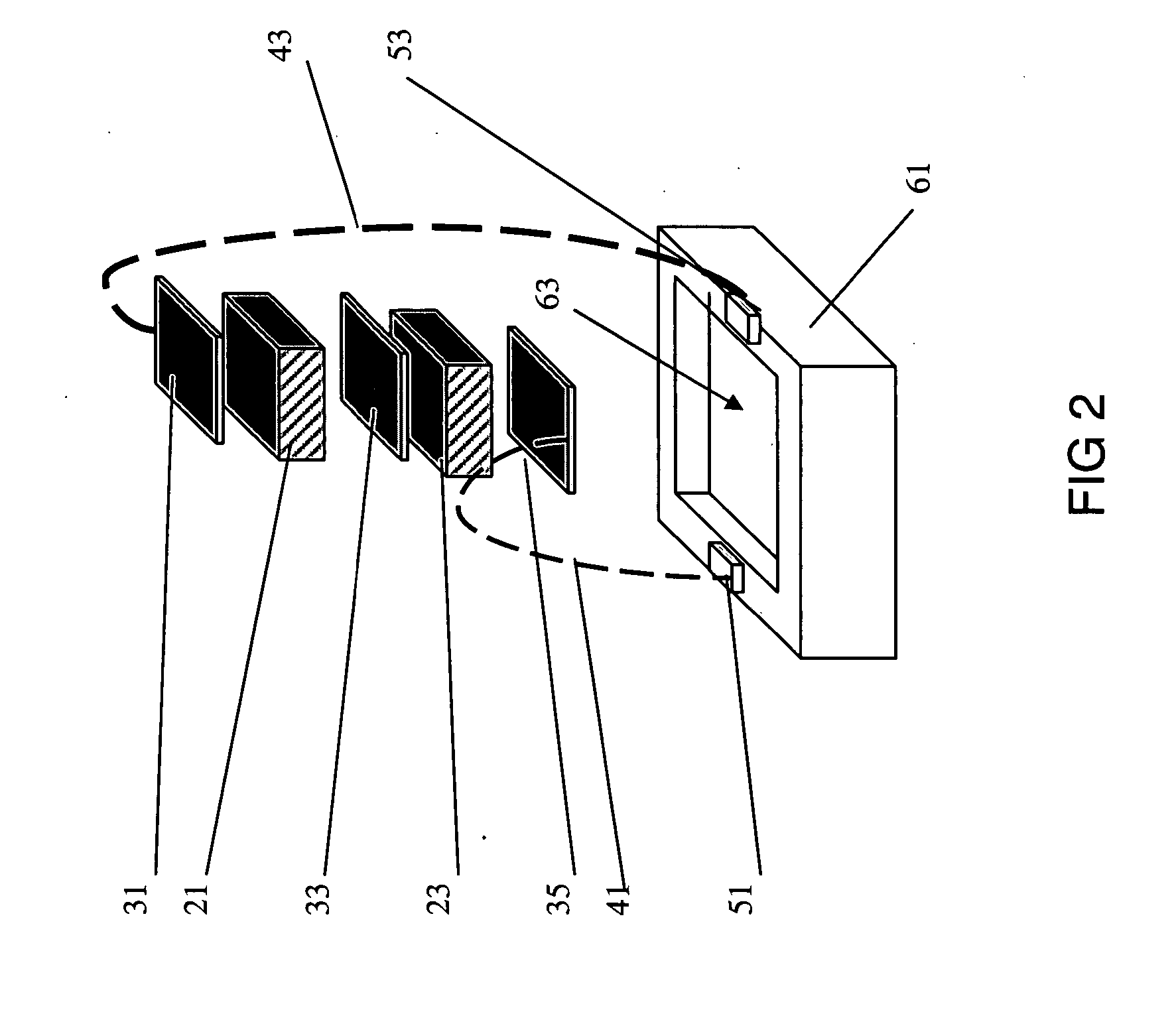Solid state lighting device
a solid-state lighting and battery-powered technology, applied in the direction of electric variable regulation, process and machine control, instruments, etc., can solve the problems of inability to read the red portions of the image sensor, insufficient light for true flashlight or emergency light use, and waste of energy, so as to achieve the effect of emitted white ligh
- Summary
- Abstract
- Description
- Claims
- Application Information
AI Technical Summary
Benefits of technology
Problems solved by technology
Method used
Image
Examples
Embodiment Construction
[0046] The invention described herein provides a rugged and reliable, fully integrated portable lighting system for outdoor and emergency use. The system includes LEDs, a step up power supply, preferably operating in a pulse mode, at nanosecond level pulse's, and an optional rechargeable battery, and integrated battery charger.
Monolithic Light Emitting Diode Array
[0047] The light emitting diode series array contains a plurality of individual light emitting diode elements. The individual LED elements are electrically and mechanically in series. The array includes a first light emitting diode element having an anode region and a cathode region, and a second light emitting diode element also having an anode region and a cathode region. The individual elements are joined into a monolithic array by a conductive, rigid bond region between the cathode region of the first light emitting diode element and the anode region of the second light emitting diode element.
[0048] The array includ...
PUM
 Login to View More
Login to View More Abstract
Description
Claims
Application Information
 Login to View More
Login to View More - R&D
- Intellectual Property
- Life Sciences
- Materials
- Tech Scout
- Unparalleled Data Quality
- Higher Quality Content
- 60% Fewer Hallucinations
Browse by: Latest US Patents, China's latest patents, Technical Efficacy Thesaurus, Application Domain, Technology Topic, Popular Technical Reports.
© 2025 PatSnap. All rights reserved.Legal|Privacy policy|Modern Slavery Act Transparency Statement|Sitemap|About US| Contact US: help@patsnap.com



